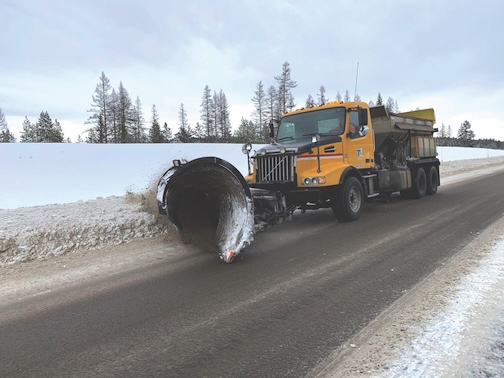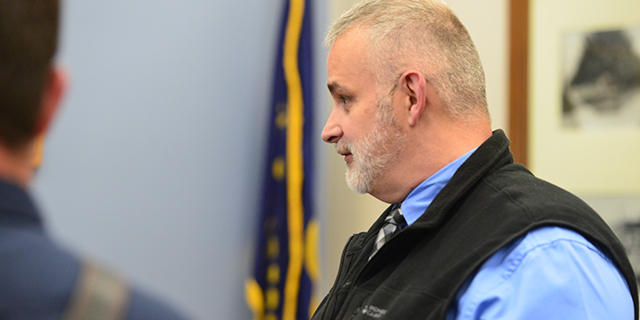‘Cooking beyond Measure’
Published 3:27 pm Tuesday, December 16, 2008
Back when I was a college student and stayed up at all odd hours of the night, I caught part of a short, small budget documentary following a longtime family in the Appalachians.
Trending
The documentarian, who had been working to establish a friendly relationship with his subjects, started to praise the matriarch’s cooking at which point, she blushed, denying her prowess in her simple kitchen. After continuing that this woman made the best pancakes, the filmmaker asked if she would make some and when she did, she prepared the mix by feel and by memory, scooping the flour with a cupped hand from a covered pail on the floor.
Years later, I still think of that scene and the woman and her measuring technique. There’s much to be admired when witnessing a confidence in cooking that comes from experience and from a heart relationship with a kitchen that’s built board by board like the woman’s own Appalachian home.
A book of this kind of experience which is guided and encouraged by personal taste rather than measured recipes was recently released by an Oregonian, Jean Johnson. “Cooking Beyond Measure: How To Eat Well Without Formal Recipes” was written, photographed and designed by Johnson and is the first book published by Seventy-Sixth Avenue Press, based in Portland.
Trending
The idea is that our way of preparing dishes has evolved over the decades. Once, improvisation and intuition were key to the supper table and measuring cups and measuring spoons as we know them weren’t at all common or even present in most households. According to Johnson’s introduction, measuring cups and spoons were first thought of as essential tools during the late 1890s. At the time, the country began to industrialize and domestic science came about with the intention to make things like cooking orderly, predictable – something to be taught from textbooks in any classroom. Local knowledge was judged, tested and condensed into expert-approved methods and recipes.
In 2008, we find a growing uneasiness over the way the country thinks of food. Mass production has ensured far distances between people and what they eat. Many remain apprehensive about cooking, preferring rather to eat out or eat from boxes. And those who attempt to cook from cookbooks may often find themselves “doing the equivalent of small chemistry experiments.”
Johnson’s book is different because there are no measurements and no precise directions given. Instead, dishes have unnumbered recipe notes, poetically, but clearly written, as if Mom was telling you at the chopping board. For figgy cereal, she writes, “Slice the figs crosswise to make fetching tan circlets.” The language is appealing and puts the ingredients front and center.
And then, details supplement the note. For example, a recipe note might involve quinoa or roasted peppers, but the instructions for making each element aren’t included in the note, but rather in the details. Even then, the process is more a guidance, a method rather than a set of directions.
In Brie and Coconut, Johnson tells how to toast the coconut in the details, letting us know to judge its doneness by color and by smell.
The prospect of cooking without precise directions and measurements seems a little scary. Johnson has faith that any one can do it, though. Her notes and details make cooking more of a lesson than a directive. She seems not to be interested in holding our hands but rather making us excited to venture into the kitchen and discover our likes and dislikes dish by dish. She’s trying to convince us that it’s not intimidating and that our palettes are our own.
“I suggest that we grieve over the loss of the artistry that was once ours in the kitchen,” Johnson writes. She makes the case that individuality and agency over what we eat could mean better health or at least a stronger connection with our bodies and with each other. She convinces that food can taste too good to always subject it to someone else’s recipe, corporate or not. She wonders why we let all the cook book writers have all the fun.
My favorite cookbooks are the ones put together for fundraisers where the recipes come from community members, obviously scratch cooks. One of the best comes from Sadako Doi in “Favorite Recipes for Islanders,” a book bound with a plastic spine put out by the Hilo Extension Homemakers Council Inc. For her sweet potato chips, she chills a mixture of mashed sweet potatoes, katakuriko (potato starch), sugar, salt and “1/4 C or more water.” In the morning, she slices the mix and dries the chips in the sun for three to four hours. She includes, “I use the roof of car.”
Other directions in similar books say “use as much as you like, I put plenty” and one recipe for i’a ota (a kind of ceviche) in “Local Recipes from Hawaii’s Kupuna” reports, nonchalantly, that the recipe comes from a Tahitian fire walker – a hint of what’s to come. The recipe that follows is an unmeasured list of ingredients and a three-sentence direction that ends with “add to taste.”
Johnson’s book includes a “smattering of suggestions to get your creative sparks going.” Sprinkled throughout the recipe notes are descriptions of ingredients to use that could become new versatile staples – things like whole grains; and Gjetost, a caramelized goat cheese from Norway. She expounds on the greatness of a pot of beans – it’s virtues of economy. That the smell of them in a warmed kitchen extends the experience of eating to the noneating parts of your day. And later, the versatile and healthy bean extends meal options and even one’s life span.
In “Cooking Beyond Measure,” you’ll find how to roast a green chile and get little kitchen advice like not crowding green beans in the oven so that they roast rather than steam. Johnson writes, “When you cook according to your own rhythms, you are free to experiment with whatever approach best suits.”
Enter Spicy Cilantro Salad with White Chocolate, Pineapple and Cashews. Born on a hot day, the recipe used what was available in the kitchen. The intriguing recipe was the result of Johnson’s playfulness and embracing of scratch cooking.
Recipes and cookbooks are good things to have in the kitchen. I love reading them and opening them up for inspiration, but usually I won’t follow a recipe word for word. It can take the fun out of cooking. It’s the best feeling to make something by feel and by taste, like the time I made pao doce, Portuguese sweet bread, in a cabin in Imnaha, far from the recipe I had written out on the back of an envelope. I think this is the kind of joy Johnson wants us to experience – an ownership and knowledge of what we put into our mouths and what nurtures us.
Find “Cooking Beyond Measure” at Sunflower Books and online.









